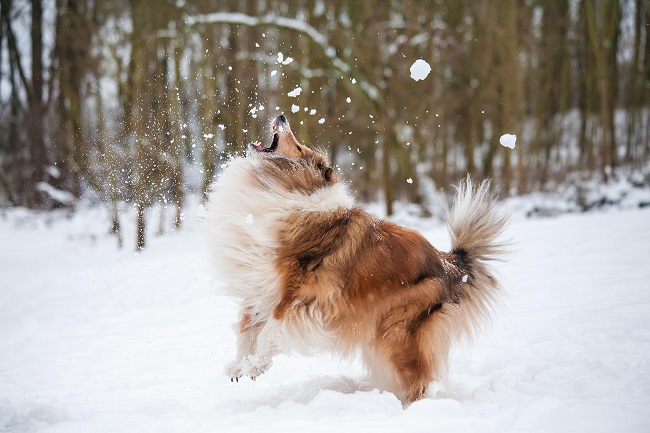
Cold weather and frigid temperatures are just around the corner, so follow these six tips to keep your more comfortable this winter.
#1 If your companion animal is older and arthritic, be sure not to leave her or him outside too long. Just as with humans, colder temperatures can make arthritic joints stiff and painful.
#2 Dogs that walk on sidewalks and streets should have their paws cleaned upon re-entering the home. Ice, rock salt and other chemicals can collect in their pads and cause irritation, not to mention ruin your nice hardwood floors or carpet.
#3 If you live in an area where snows are frequent or deep, clear a spot in your yard for your dog to eliminate wastes.
#4 Animals must burn more calories to stay warm during the cold months, especially if your pet will be frequently outdoors. Consider increasing the amount of food you feed by 10–20%.
#5 Keep in mind, if it’s too cold for you to be outside, then more than likely it is too cold for your indoor dwelling pet. When you do let them outside, monitor them closely and don’t leave them out for too long.
#6 Leaving your pet in your vehicle on a cold day is almost as bad as leaving them in it on a hot summer day. Vehicles will start to act as a refrigerator and often the inside of the vehicle will be colder than the outside temperatures. Please attend to your pets with care in all seasons
Did You Know
A 3,300-pound stingray was recently caught off the coast of Eastern China. The stingray, which measured 16 1/2 feet in width, is believed to be one of the largest stingrays ever caught.
One of the lesser-known side plots in World War II was the rescue of the Lipizzaner horses, a rare breed exclusive to Vienna and associated with the Spanish Riding School. During World War II, Alois Podhajsky, leader of the Spanish Riding School, relocated the horses to St. Martin in Upper Austria due to bombing raids in Vienna. Although safe from bombing attacks, there was little food for animals or people, and starving refugees sometimes attempted to steal the horses, viewing them as a source of meat. In 1945, the United States Army took control of St. Martins. General George S. Patton of the 2nd U.S. Cavalry Group had been a fellow equestrian competitor with Podhajsky in the Olympic Games prior to the war. The two men renewed their acquaintance, and the Americans agreed to place the stallions under the protection of the United States until they could safely be returned to the people of Austria after the war.
Related Articles & Free Email Newsletter Sign Up
5 Things Every Ferret Owner Should Know
8 Inexpensive Aquarium Tips and Tricks




Comment here